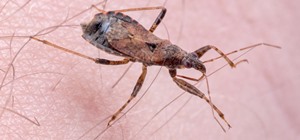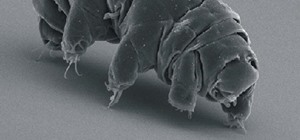Yellow fever has emerged again in Brazil, causing death and disease to people unprepared for this mosquito-borne illness.
In recent years, successive waves of mosquito-vectored diseases have gained attention and caused misery throughout the Americas. Dengue, West Nile, Zika, and yellow fever are arborviruses, diseases spread by ticks, mosquitoes, or other arthropods, like biting flies. All of these belong to the Flavivirus family of pathogens.
Yellow fever is a particularly aggressive virus. After an incubation period of three to six days following the bite of an infected mosquito, a patient may suffer few symptoms (pain, headache, or nausea) as the virus runs its course over three or four days.
While most victims recover at this point, approximately 15% to 20% advance to a second stage where symptoms intensify into high fever, hemorrhagic tissue damage, and liver failure. The name of the disease, "yellow fever," comes from this phase when jaundice causes the whites of the eyes to take on a yellowish hue. With no real therapies or drugs available to halt the disease, treatment at this stage is supportive, and between 20% and 60% of those with the more severe form of yellow fever die.
The current outbreak in Brazil began in December 2016. While most cases of yellow fever are sylvatic, or associated with jungle transmission, the growing number of cases are being diagnosed closer to cities where populations are generally not vaccinated for yellow fever.
At present, more heavily populated areas including Espirito Santo, Sao Paulo, and Minas Gerais are reporting suspected cases of yellow fever. With more than 900 cases under investigation, and 352 cases confirmed, there have already been approximately 113 deaths attributed to this outbreak.

Low vaccination levels, movement of infected individuals throughout the country, and infected monkeys that act as viral reservoirs have contributed to this outbreak, the biggest yellow fever event in Brazil for approximately 20 years.
Of particular concern to health authorities is the possibility of urban transmission of the virus. While sylvatic disease transmission moves from non-human primates through mosquitoes to humans, urban transmission occurs when an infected humans become a vector for mosquitoes in an urban setting. The disease is then spread human to human by mosquitoes.
Like Zika, yellow fever is primarily spread by the Aedes aegypti mosquito. In an assessment, the World Health Organization (WHO) notes, "the risk of urban transmission of yellow fever cannot be ruled out," given the proximity of the cases to city settings.
In January, the Brazil Ministry of Health ordered an additional 11.5 million doses of yellow fever vaccine to address the crises.
The yellow fever vaccine, developed in 1937 by virologist Max Theiler, remains in use today. As a live-attenuated virus, the vaccine is a weakened form of the yellow fever virus considered to confer lifetime immunity to those nine months or older who receive it through injection.

Unfortunately, severe side effects, such as multi-organ failure, may accompany use of the vaccine in individuals over 60 years of age. Of those who suffer these impacts, there is about a 60% mortality rate.
During a yellow fever outbreak in 2016 in Angola and the Democratic Republic of Congo in Africa, WHO authorized fractional dosing of the vaccine, due to shortages. Considered an emergency measure, fractional dosing means each recipient receives one-fifth of the usual dosage, which doesn't usually confer lifetime immunity, so leaves those treated with the threat of being infected in the future.
Yellow Fever in the US
While yellow fever was once a serious problem in the US, the last outbreak was in New Orleans in 1905. According to a review in the New England Journal of Medicine, a yellow fever epidemic in Philadelphia in 1793 killed thousands of people, with a death toll that eventually rose to include approximately 10% of the population of the city. Mosquito control and better sanitation eliminated the threat, and most American physicians have never seen a case of yellow fever.
It is also conceivable that yellow fever outbreaks may occur in the US territories, just as the recent Zika epidemic reached Puerto Rico, causing a significant outbreak there and leading to thousands of travel-related cases and more than 250 locally transmitted cases in the continental United States.
Time will tell if yellow fever will again make inroads on our shores. The virus is a serious threat to American travelers and those living in the subtropical territory of the A. aegypti mosquito. West Nile, Zika, yellow fever, or dengue, arborviruses remain a serious threat to humans, on whatever continent they occur.
Just updated your iPhone? You'll find new emoji, enhanced security, podcast transcripts, Apple Cash virtual numbers, and other useful features. There are even new additions hidden within Safari. Find out what's new and changed on your iPhone with the iOS 17.4 update.



























Be the First to Comment
Share Your Thoughts